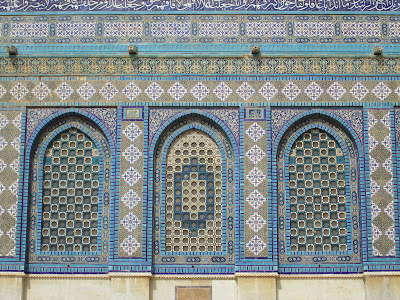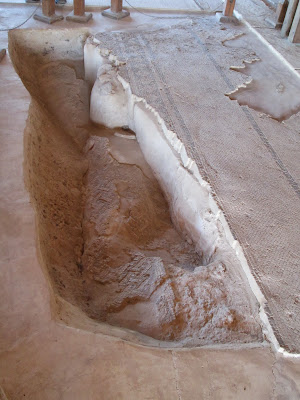Thursday, 31 October 2013
Wednesday, 30 October 2013
Tuesday, 29 October 2013
The Quarry of Love
A free version of St John of the
Cross’ poem ‘Tras de un amoroso lance' on which I have been spending quite a bit of time.
Jesses slipping, I rose,
ringing up circles of hope,
rising, rising, to stoop,
to strike my quarry of love.
Hidden by height, unknown,
concealed in cloud, unknowing,
and still rising, rising,
cast off on a quest divine.
With flight feathers failing,
with air thinning, breath straining,
rising, rising, to stoop,
to strike my quarry of love.
Hooded by light, blinded,
at the highest pitch sited,
disorientated
as if dusk had now fallen,
in radiant darkness,
in a love-fuelled forlornness,
rising, rising, to stoop,
to strike my quarry of love.
Hobbled by night, confined,
resigned to my hunt’s failure,
in self abnegation
calling ‘I cannot go on’,
falling, falling away,
and yet somehow still rising,
rising, rising to stoop,
to strike my quarry of love.
Hallowed by flight ending
in a kill astonishing,
with hope vindicated,
a thousand chances in one.
On fresh-caught love gorging,
still mantled by hope, as when
rising, rising to stoop,
to strike my quarry of love.
Notes
In the diligent exercise of mystical
contemplation, leave behind the senses and the operation of the intellect, and
all things sensible and intellectual, and all things in the world of being and
non-being, that you may arise, by unknowing, towards the union, as far as it is
attainable, with him who transcends all being and all knowledge. For by the unceasing and absolute renunciation
of yourself and of all things, you may be borne on high, through pure and
entire self-abnegation, into the super-essential radiance of the divine
darkness. ‘The
Mystical Theology’ Pseudo-Dionysius (the 6th century tradition the
poet is expounding).
Hawking for the heron was regarded as
perhaps the noblest and most thrilling form of the sport: the heron with its
large wings and light body, could rise in sheer, almost perpendicular rings, and when alarmed
would make for the upper air; the falcon, in wide, sweeping circles because of
its great weight, strength and speed, would gradually overtake the heron,
perhaps in the very clouds, soaring high above to dive for the quarry. ‘The Poems of St John
of the Cross’ John Frederick Nims.
The influence of the popular poetry of Old
Castile on John of the Cross... has often been noted... The villancico was a
poem with a refrain, often sung, the theme of which was formulated in an envoy,
the envoy reappearing, at times in slightly different forms, as refrain... [He] drew... on the secular poetry of
Garcilaso de la Vega... and on its transformation ‘a lo divino’ that Sebastian
de Cordoba... published in 1575... [where] Sebastian modified the texts in
order to apply to divine love what they said of human love.
‘Poetry and Contemplation in St John of the Cross’ George H
Tavard (and the opening four lines of this poem is borrowed from Garcilaso).
Sunday, 27 October 2013
Sephardic synagogues
In Cordoba two years ago we visited a synagogue, museum and restuarant each of which reflected the Spanish (which is all that 'Sephardic' means) tradition prior to the Jewish expulsion at the end of the fifteenth century. We learnt that many of those expelled found refuge in the parts of north Africa and then further east where they were tolerated under Ottoman rule. So it closed an interesting circle to find in Jewish Quarter of Jerusalem, which came under Ottoman control at the beginning of the sixteenth century, a whole group of Sephardic synagogues established in the seventeenth century.
The furnishings (from Italian synagogues) and decorations are, however, all new. These synagagues were trashed in 1948 and restored after 1967.
As this last pair of pictures shows in particular; in each case the 'before' picture hangs on the walls of the synagogue today.
Saturday, 26 October 2013
Friday, 25 October 2013
Karaite Synagogue
What claims to be the oldest synagogue in Jerusalem or the world (from the Eighth Century, damaged when the old Jewish Quarter came under Jordanian control in civil war in 1948, restored and brought back into use after the Quarter became part of Israel following the Six Day War of 1967) is not part of rabbinic Judaism (the normative form of Judaism which developed in the period shortly before and then for a while after the time of Jesus) but of Karaite Judaism (which follows a strict interpretation of the Torah and rejects all later developments and later festivals). The synagogue's ancient Torah scroll is written on deer skin.
The Karaite's take off their shoes to enter the synagogue and prostrate themselves during prayers, both of which we might imagine are Islamic practices. It is just possible that this reflects a common approach to prayer from the period before either modern Judaism or Islam arose, although it is also possible that the customs have developed later independently. The possibility that they reflect early practice reminds me of other speculation that practices in some Eastern churches (such as a manner of fasting and the use of prayer mats) reveal a common approach to prayer before either modern Christianity or Islam arose.
Thursday, 24 October 2013
Destruction in 70 AD
It turns out in the 1970s that housing which was very near the Jerusalem Temple in the First Century was uncovered underground; it may have been home to those who worked in the Temple (there is certainly excessive provision for ritual washing), and is as close as one might get to touching the world of the time of Jesus. It carries remarkable direct evidence of the Roman destruction of the Temple and the city forty years after Jesus' resurrection. This mosaic (which strictly avoids animal or human forms, actually unlike many synagaogue mosiacs) was discovered under a layer of charred ceiling wood, and, among other things a coin dated 69 AD fixes things precisely.
Here are scorch marks on another floor near by. The historical accounts of how fierce the fires were are reflected in this.
And on a wall also close by. I had no idea this sort of evidence existed until we went down there today.
Wednesday, 23 October 2013
Caesarea
The amphitheatre is mainly reconstructed.
The harbour from which Paul set off on his journey to Rome.
A replica of the only record of Pontius Pilate; we saw the original in the Isreal Museum.
Tuesday, 22 October 2013
Monday, 21 October 2013
Sepphoris
We were here on our Gailee trip. There are suggestions that when this Roman regional capital began to be rebuilt from 3 BC this might have attracted general builders like Joseph to come to live in near by Nazareth (see here on the hill in the distance).
The Roman streets still have cart marks visible.
But the glory of the place is its mosaics, of which this Pisces is only one tiny example.
The left hand side of this picture shows mosaic in the state in which it was found as a result of earthquake. The right hand side shows it restored and level.
Sunday, 20 October 2013
River Jordan
I could have used one of my pictures of the River Freshney and those in Grimsby might not have noticed the difference, although the Freshney has a slightly more attractive colour. This is in the area where the people of Israel entered the Promised Land, and is the traditional site of Jesus' Baptism, so all pilgrims have pictured it in their minds for years and hope for a more impressive sight than this. But these days most of the water is extracted up-stream to meet the needs of a much larger population, which is why the Jordan here is now Freshney-sized, and why the level Dead Sea into which it is about to flow is slowly going down.
Saturday, 19 October 2013
From St George's Monastery
A nineteenth century revival of a desert monastery destroyed by invaders in the sixth century. Today there were persistent trinket sellers outside and a press of pilgrims inside with a diesel generator running and building work going on.
The early desert 'fathers' were as likley to be hermits as to live in community. But how do these present ones get in and out of here?
It is not quite as remote as it looks because the Judean desert comes up close to Jerusalem; this picture was taken above the monastery and the central tower is the one on top of the Mount of Olives.
We spent a hot hour and a half this morning walking the other way on a path above this deep wadi. In this picture, Jericho is just coming into view.
Thursday, 17 October 2013
Bet Guvrin Bell Caves
Only one of the highlights today. These are the insides of mines in use from the Byzantine period onwards. The soft stone was used for plaster work, and it was removed through the small openings at the head of each cave.
Wednesday, 16 October 2013
Arad temple
Of all the things seen on our latest visit to the central Israeli Museum, I was almost most struck by this reconstruction of the central part of a temple from the 8th century BC (which was subsequently deliberately destroyed when all such worship was centred on the Jerusalem Temple alone). Might this give an indication of the sort of space in Jerusalem entered by the High Priest alone and on just day of the year? The blank standing stone at the back has some similarities with the Canaannite standing stones at Tel Gezer pictured here in September, the sorts of stones on which tradition would lead one to expect to find the Ten Commandments in the Ark at the centre of the Jerusalem Temple. The two pillars at the front are altars for burning incense, and remaining traces of incense where found on them.
Monday, 14 October 2013
Capernaum
The poor village in which Jesus lived for some time had a synagogue paid for by a Roman, and the local basalt line beneath the later limestone synagogue here may well be that building.
And the houses next door may well be those in which people lived then or a little later; a house near by has been traditionally identified as Peter's (or his mother-in-law's).
This surviving synagogue capital shows the ark of the covenant (with wheels by which it could be moved).
This example of a two handled grinding stone brings to mind Jesus' own reference to two women grinding together.
Subscribe to:
Posts (Atom)


















































